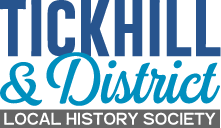

Tickhill's Beerhouses
The 1830 Beerhouse Act prompted many ratepayers throughout the country to purchase the two-guinea licence, and open up their front parlours as a beerhouse. The 1830s trade directories make reference to several beerhouse keepers in Tickhill; amongst these were William Bradley, John Westren, John Green and George Hartley on Sunderland Street, Thomas Marshall and James Watkinson on Northgate, John Sheppard on Castlegate, George Brookfield, William Moore and Jonathan Watkinson on Westgate and James Gleadall at Lindrick, all had taken advantage of the new Act and were trading by 1837. None of these businesses had an official name; they were simply referred to as ‘beerhouses’.
(For more information on the 1830 Beerhouse Act, see ‘Inns, Beerhouses and Off-licences’ on this site).
Some licensees combined keeping house with their primary occupation or trade, as did William Hill and the aforementioned, Thomas Marshall, who were both farmers; later in the century, William’s wife Sarah and then his son, also named, William appear to have taken over the licence. In the latter years of the 19th century, the Registers of Licences, 1887-1891 show only one of the above-mentioned establishments – that of William Hill - was still in business.
William Hill had been a beerhouse keeper since the late 1840s; the 1848 Tickhill Tithe Map shows his premises to have been on the west side of Northgate - half way between Mangham Lane and Common Lane. The Hill family were beerhouse licence holders until 1897; the following year Fred Saxton was granted a licence for a beerhouse called the Old Exchange in Northgate. Whether these two beerhouse were one and the same with just a transfer of licence has not been established. The Old Exchange traded for ten years, and although Fred Saxton gave evidence to the licensing magistrates in support of a renewal of his licence, it was not upheld.
Other twentieth century beerhouse owners included Thomas White, Oswald Fritchley and Joseph Liley, all of Northgate.
A few establishments, whilst officially referred to as simply ‘beerhouse’, did have names:
The Royal Oak
For almost 70 years from c1870 to the late 1930s, the Green family was associated with a beerhouse on Northgate, known as the Royal Oak; the first reference to the ‘beerhouse’ appears in the 1871 census, which records Joseph Green, a joiner, as the licensee. On Joseph’s death in 1894, his wife Harriet, who also traded as a roper, ran the business assisted by her eldest son, Sydney; when Harriet died in 1925, her younger son, Vernon took over the licence.
The beerhouse was never referred to as the Royal Oak in censuses, trade directories or the licensing registers, however the link between the name and the Green family appears in a photograph of the Royal Oak on this website. It shows a group of people standing outside a large building, on the wall is a board, which clearly states ‘Royal Oak, Proprietress Harriet Green, Licensed Retailer of Beer’.
The name derives from the Boscobel Oak, near Shifnel, Shropshire in which Charles ll hid from the Roundheads after the Battle of Worcester in 1651. With the restoration of the monarchy in 1660, the king’s birthday, May 29, was known and celebrated as Royal Oak Day as an act of thanksgiving; the inn sign is attributed to rejoicing at the restoration.
The Royal Oak is still in business today (2009) and is simply known as ‘The Oak’.
Travellers’ Rest
The Travellers’ Rest is another beerhouse, which, initially, was never formally referred to by name. By 1837, farmer, William Watkinson of Westgate had obtained a licence and set himself up as beerhouse keeper; eleven years later, the Tithe Award shows William to be both the owner and occupant of the property on Westgate; the location on the Tithe Map confirms the site to be that as the inn known today (2009), as the Travellers’ Rest. Following his death in 1849, his widow, Innocent, took over the licence until her own death in 1868.
The next owner was another farmer, William Hancock, who was to be the licensee for approximately the next 50 years; by the 1880s, however, the licensing registers officially refer to it as the ‘Travellers’ Rest’. It was rebuilt in 1908, and whilst not offering accommodation for visitors, it did provide stabling for four horses. Several pre-1908 photographs of Westgate on this website show the Travellers’ Rest with a sign on the front confirming William Hancock as licensee; a later photograph, taken c1930s, shows George Morrell to be the landlord.
The White Horse
A beerhouse known as the White Horse was situated on the north side of Sunderland Street about half way between Market Place and the Scarbrough Arms. The earliest located reference appears in the 1848 Tithe Award and Map, which lists Samuel White as the owner and occupier of a property described as a ‘public house, cottage and yard’; like many other licensees at the time, Samuel combined beerhouse keeping with his primary occupation, that of a ‘cordwainer’ (shoemaker). Whether this establishment had originally belonged to any of the Sunderland Street beerhouse keepers mentioned previously is not known.
In the 1870s, the licensee was George Gleadall and the White Horse began its long association with the Gleadall family. The property is listed as the White Horse on the 1881 census, and from then until its closure in 1908, when an application for a renewal of licence was refused, Edward Gleadall is named as ‘beerhouse keeper’. Confirmation of its ‘beerhouse’ status appears in the Register of Licences 1886-1891.
There was also an inn known as the White Horse on Northgate see ‘The White Horse’ text on this website.